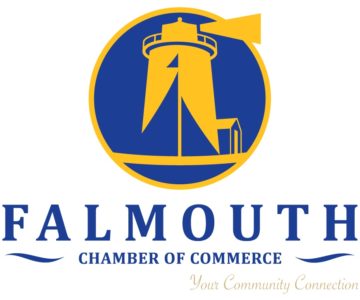By Bill O’Neill
What do the Cape’s tallest and oldest lighthouse, a jam kitchen and a sports car collection have in common? They’re all part of the Cape Cod Museum Trail, a network of 70 local attractions.
The Museum Trail was launched in late 2014 as a way for museum directors to share information and promote each other’s venues. The group’s website (capecodmuseumtrail.com) is a handy go-to for tourists or for Cape residents looking for something to do on a day off.
Cape museums are still joining the trail. Those that are on board already include the Highland Lighthouse in North Truro, the Green Briar Nature Center and Jam Kitchen in East Sandwich and the Toad Hall Sports Car Collection in Hyannis.
Participating sites cover a range of interests. Love the sea? Check out the Woods Hole Ocean Science Exhibit Center or the Whydah Pirate Museum in West Yarmouth. Is history your thing? The Museum Trail provides previews of the Cape Cod Canal Visitors Center, the John F. Kennedy Hyannis Museum and the Mashpee Wampanoag Museum.
Art lovers can get the info they need to plan a trip to the Cape Cod Museum of Art, the Edward Gorey House or the archives of photographer Rowland Scherman. Or you can learn more about nature at the Cape Cod Museum of Natural History, the Salt Pond Visitor Center Museum or the Waquoit Bay National Estuarine Reserve.
Some of the attractions are widely known, like the Sandwich Glass Museum or the Pilgrim Monument and Provincetown Museum. OHighland Lighthouse in North Truro, the Green Briar Nature Center and Jam Kitchen in East Sandwich and the Toad Hall Sports Car Collection in Hyannis.
Participating sites cover a range of interests. Love the sea? Check out the Woods Hole Ocean Science Exhibit Center or the Whydah Pirate Museum in West Yarmouth. Is history your thing? The Museum Trail provides previews of the Cape Cod Canal Visitors Center, the John F. Kennedy Hyannis Museum and the Mashpee Wampanoag Museum.
Art lovers can get the info they need to plan a trip to the Cape Cod Museum of Art, the Edward Gorey House or the archives of photographer Rowland Scherman. Or you can learn more about nature at the Cape Cod Museum of Natural History, the Salt Pond Visitor Center Museum or the Waquoit Bay National Estuarine Reserve.
Some of the attractions are widely known, like the Sandwich Glass Museum or the Pilgrim Monument and Provincetown Museum
thers are local historical societies that are little-known beyond their neighborhoods.
The goal of the Museum Trail is to make residents and visitors more aware of the Cape’s museums. In addition to the website, which has plenty of videos, photos and articles, the Museum Trail has a Facebook page and an email newsletter that lists upcoming events.
The Museum Trail is sponsored by First Citizens’ Federal Credit Union. Peter Muise, the CEO of First Citizens’ has a little game he likes to play. He asks people to name as many Cape Cod museums they can.
“People come up with the obvious ones – Heritage Museums and Gardens, the JFK Hyannis Museum,” he says. “They come up with about a dozen.”
Then he tells them about the Cape Cod Museum Trail, with its 70 museums.
“It blows them away,” he says. “There is a huge amount of history and culture that folks are just not aware of.”
The Museum Trail is a great service for summer and weekend vacationers, he says. “It might be someone from Philadelphia or Michigan who is coming in the second week in July and wants to know what is available,” he says. “Where do they go to get some of this information? Now there is an opportunity for that.”
The credit union’s marketing department administers the website, at no cost to participating museums, many of which are too small to have their own marketing staff.
“It gives them this huge awareness-marketing opportunity,” he says. “It doesn’t cost them anything to join except for time. They have a responsibility to make us aware of their events, and we’ll be happy to publicize them. Your best results will be based off of your active participation.”
Local museum staff members are grateful for the exposure they’re getting from the Museum Trail.
“With all the electronic and digital media pathways, consumers have many more ways that they’re being reached with marketing messages than ever before,” says Chris Galazzi, executive director of the Cape Cod Maritime Museum in Hyannis. “The challenge for museums is how do you cut through that clutter?
“By marketing the museum experience across the breadth and depth of the Cape, from the Canal to Provincetown and everywhere in between, the Museum Trail gives visitors a platform to begin exploring the museum experience on Cape Cod.
“They may have heard of a museum or a historical society in a particular town. Now they can go to one spot and see the choices in all the towns.”
Danielle Jeanloz, executive director of the Atwood House and Museum in Chatham, says the Museum Trail is a boon for small and mid-sized museums, giving them the opportunity to reach many more people. “It gives us an online presence that we couldn’t have on our own,” she says.
The Museum Trail also is a great way to market the Cape to potential visitors, she says. “We want to show the rest of the world that we are more than beaches. We have fabulous beaches, but we have so much more to offer. If we can show that in an organized way, it really allows us to offer a stronger destination.”
In addition to the increased visibility, Cape museums benefit from new forms of collaboration.
Executive directors or other representatives of the museums meet about four times a year to critique the trail’s progress and plan future development.
Muise says that many of the museums survive primarily on admission and memberships. The network meetings “give me a chance to say to Bob Dwyer at the Cape Cod Museum of Natural History or Sarah Johnson at the Cahoon Museum of American Art, ‘What can we do to help you? What can we do to get more people to visit?’”
The meetings are a great networking opportunity for a group of museums of varying sizes, locations and missions, says Muise. He envisions that these connections could lead to museums sharing everything from shelving equipment to exhibits.
The Highland Lighthouse’s location, over a mile off Route 6 in North Truro, had left manager Paula Perrone feeling a bit isolated.
“The Museum Trail has given me the opportunity to meet with other museums at meetings,” she says. “We talk about shared experiences and issues. They were able to help me develop educational programs so I can get more school visits in April and May.”
“We all mean to talk with colleagues but often we run out of time,” says Jeanloz. “The Museum Trail has been proactive about scheduling meetings, so you get to know your colleagues better. Then you’re more apt to pick up the phone to share ideas. We learn from one another.”
Thanks to networking started by being part of the Museum Trail, the Cape Cod Maritime Museum, the JFK Hyannis Museum, the Cape Cod Children’s Museum and the Whydah Pirate Museum are collaborating to develop grants and exhibits that support one another, says Galazzi.
For example, Pillage the Village, a family-friendly pirate event, brings families to Hyannis, where they visit the businesses along Main Street, tour the Cape Cod Maritime Museum and take part in some Children’s Museum projects at the Maritime Museum.
“The Museum Trail helps us reach a new audience and it’s also reinvigorated our creativity,” Galazzi says. “It’s given us more colors to paint with on the palette, in terms of what we can do to be relevant to our community.”
Many of the museums had booths and displays at the Festival of Museums, a gathering in May at the Hyannis Youth and Community Center that attracted about 1,000 people.
“I was talking with people from off the Cape about Highland Lighthouse, or I was talking with people from the Cape who had never been there because it was too far or they didn’t know it was open every day during the summer,” says Perrone. “I was talking with people who were affiliated with schools and the Boy Scouts and tour bus operators, who I would never have come in contact with.”
Jeanloz says her staff went to the Festival of Museums and enjoyed the camaraderie of being with colleagues from other museums.
Jeanloz and Perrone appreciate that Muise of First Citizens’ visited their museums.
“He didn’t want a behind-the-scenes tour,” says Perrone. “He wanted to see what it was like for a person coming in off the street to see the lighthouse.”
Muise grew up in Quincy and Weymouth and remembers taking school trips to the Abigail Adams birthplace in North Weymouth.
Last fall, after the summer rush, Muise, who lives in Marion and works out of the credit union’s administrative headquarters in Fairhaven, made it a project to take Friday treks to visit Cape museums with his wife or other family members. “We had a wonderful time,” he says. “I want to visit them all.”
Exploring the region’s museums: The Cape Cod Museum Trail leads visitors and locals alike through hidden treasures

Select to Read Similar Content:




















